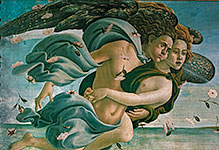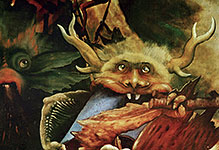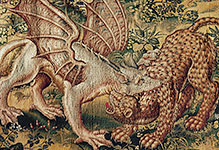
Mythology
Mythology

#03050659
The Odyssey Landscape Frescoes: Messengers of Odysseus investigating the island...

#03060119
Gilt bronze and silver figure of the enshrined Buddha, Sri Lanka, 18th century...

#03060147
Earthenware tile with a monster mask (kwimyun) design, from Korea, Unified Sill...

#03060148
A pair of fragments of silk, 3rd - 5th CE. These two fragments might once have f...

#03060149
Earthenware tile, from the Red Pagoda at Mount Quingliang, Henan Province, China...

#03060150
Pottery jar with dragon handles, chinese, 4th-3rd BCE. This funerary jar of the...

#03060164
Archaistic jade ring in the form of a dragon and a boy, Ming dynasty, 15th-16th...

#030602 1
The saga of the hero Rustam: his red horse Rakhsh lies in the pit dug by his bro...

#030602 2
Bahram hunting. From the "Five poems of Nizam",1539-1543 ID: Or 2265 fol f 202...

#030602 4
Battle between Babhruvahana, son of Arjuna the archer in Hinduism, fights agains...

#030602 6
Majnun visited in the desert by his mother and Salim, 1595. Majnun's mother tou...

#030602 7
Salim tells Majnun of his mother's death, 1595. The ematiated Majnun,wearing a l...

